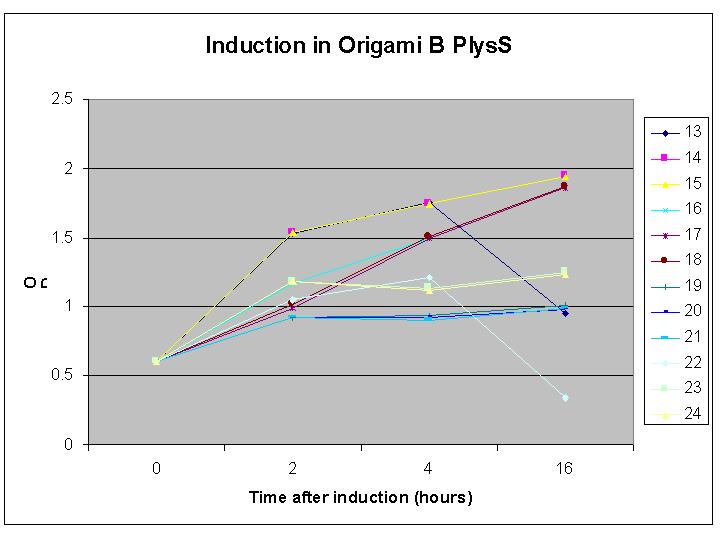 |
13 - control , 37°C, 0.2 mM 14 - control , 37°C, 0.5 mM 15 - control , 37°C, 1.0 mM 16 - control , 25°C, 0.2 mM 17 - control , 25°C, 0.5 mM 18 - control , 25°C, 1.0 mM 19 - GST-NS4B, 37°C, 0.2 mM 20 - GST-NS4B, 37°C, 0.5 mM 21 - GST-NS4B, 37°C, 1.0 mM 22- GST-NS4B, 25°C, 0.2 mM 23- GST-NS4B, 25°C, 0.5 mM 24- GST-NS4B, 25°C, 1.0 mM |